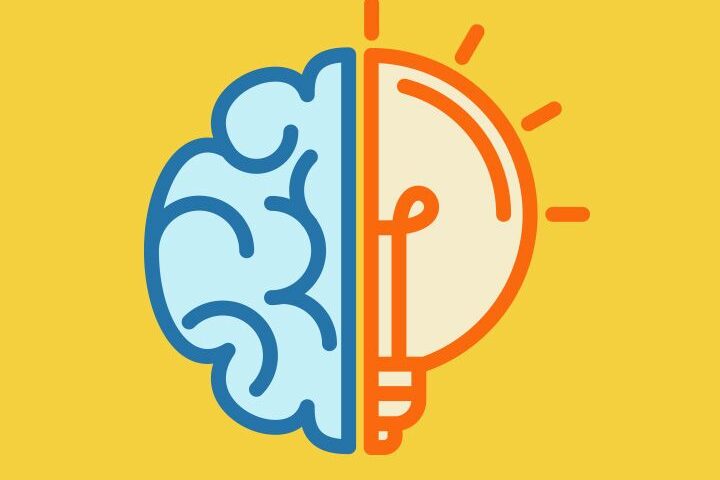
Have you heard about neuro-linguistic programming and how it can help you?
02 of November of 2022
In coaching, there is a very important term for professionals that you may not have heard until now: neuro-linguistic programming. This discipline helps coaches understand and support clients in understanding the world around them, their circumstances, and how to adapt in the best way possible to get the most out of each situation. Neurolinguistic programming (usually abbreviated as NLP) has been used for a long time in different situations of everyday life; it has had particular success in the professional field. These techniques can reinforce a good atmosphere among colleagues and, ultimately, a team’s well-being. I have been certified in this discipline for several years now, so many of the things I write here are a mix of my understanding of the subject, my experiences with clients, and the knowledge conveyed to me by my professor, friend, and mentor Javier Canal (Professor at the Francisco de Vitoria University).
What is neurolinguistic programming?
See how some of the most significant people in the field define it and reflect on it: “NLP is the study of excellence and the model of how individuals structure their experience.” O’Connor
“It’s how we organize our perceptions through the language of the mind to create our reality.” Michael Carroll
“NLP deals with studying how to modify (programming) the way we represent our experiences through neurology (neuro) so that we can communicate more effectively with ourselves and with others (linguistics). NLP is also the process through which we discover how we think, how we communicate, and how we act so that we can start to make it more fluid and fruitful.” Owen Fitzpatrick
For me personally, NLP is the way to learn that the world and the things that happen to us in it are interpretable. This means that they can be seen in different ways, so we should not jump to conclusions based on what we see, hear, or feel. In short, it is based on not judging. It is a communication strategy where personal development is also encouraged and which can promote professional excellence, self-esteem, and empathy and help improve workers’ moods. Coaching and NLP are closely related; professionals who are certified in both disciplines are highly trained in listening, observing, and not interpreting or drawing conclusions too quickly. We have special training in empathy. Empathy, one of the most important qualities, provides us with an extraordinary ability to understand others. We “put ourselves in each other people’s shoes” by feeling what they feel and seeing life the same way as the person talking to us sees it. All this provides us with important information about why they feel what they perceive, how they synthesize emotions, and how they interpret everything they perceive inside. This helps us understand the person in front of us and know how to help them in the best way.

Where and how does neuro-linguistic programming appear?
It was in the 1970s at the University of Santa Cruz (California) when a computer science student named Richard Bandler and a linguistics professor named John Grinder met and began to explore something very specific that fascinated and concerned both of them. That “something” eventually became known as Neuro-Linguistic Programming. Both Bandler and Grinder were fascinated to see how several famous therapists of that time, such as Milton Erikson (a specialist in Gestalt therapy), Virginia Satir (a specialist in family systems therapy), and Fritz Pearls (a specialist in hypnosis therapy) achieved impressive improvements in their patients and how they helped them. They decided to study these professionals and learn from them (what we call modeling in NLP). The objective of this ”modeling” was to learn what these people did step by step, their way of acting, how they would go about doing things, all in order to learn these techniques and perfect them over time. After studying these people, identifying how they did things and, above all, practicing all these therapies with a multitude of patients, they were able to identify a linguistic pattern that the therapies of all these professionals had in common. They codified effective guidelines to help people change their mental maps and thus increase their individual possibilities by considerably improving their quality of life. The result of that study led to the birth of NLP.
How does human knowledge work?
Epistemology is the science that studies the origin of human knowledge, or how humans know what we know. In this science, what we are trying to do is to learn about the relationship between the events of the world (external reality) and what we interpret from those same events. To make it easier to understand how it works, I will explain with an example: Marta works in an office with other colleagues that she has a pretty good relationship with. One day, her colleague Sonia tells her that another colleague, Jesus, has been rather unpleasant, rude, and in a bad mood lately. Gradually, Marta and Sonia start to comment constantly on the things that they and other colleagues are perceiving. It seems like the whole team agrees that Jesus’s attitude has gone from bad to worse in recent months. He treats his colleagues worse and worse; he is also starting to come to the office later and later, and his performance has dropped. Gradually, the atmosphere in the department is becoming more tense. Hardly anyone says anything to Jesus anymore, and everyone avoids having to work with him or meet with him directly. One day, while having a drink after work, they run into Marisol, the HR director, and they all chat for a long time. At one point, someone brings up the topic that was on all their minds, asking if she had noticed the change in Jesus’s attitude in recent months. Surprised, Marisol asks exactly what they know about Jesus. Sonia replies that the only thing they know is that he has been rude lately, responding poorly, arriving late, and that he is no longer the colleague he once was; they are thinking of filing a complaint with his manager. Marisol, seeing that this could lead to a problem, decided to intervene to clear up the situation. She told them that Jesus’s situation hadn’t been very good for a few months. He had started a divorce process, and the negotiation was not going on good terms. He was living an unpleasant situation at home. For a while now, this situation had been taking its toll on him, and he wasn’t feeling very well. This caused him to be more short-tempered, distracted, and sometimes arrive late. This situation is a very simple example of what NLP involves and how it is based on epistemology. Things happen in the world as they happen, and we are the ones who interpret them as we think they are. This does not mean that things are the way we see and interpret them.
What aspects of the individual does NLP work on?
As you may have noticed, one very important thing in this process is communication. We are always communicating, even if we sometimes think that we are not. There are two levels of communication: one conscious and the other unconscious. We hardly think about the latter, but we use it constantly. Communication is much more than the words we use. This was shown in 1967 when a professor of psychology at the University of California named Albert Mehrabian published a study where he concluded that communication consists of the following elements and in the following proportions:
- Physiology (facial expressions, gestures, posture) at 55%
- Intonation (volume, cadence, pitch) at 35%
- Linguistics or words we use at 7%
- Others at 3%
We can communicate through the so-called representational systems, which is the way we have to represent information that comes to us and that we send out. There are three representational systems:
- Visual– the information that we receive by sight.
- Hearing: what we receive by hearing.
- Kinesthetic: what we associate with sensations and movement. We can interpret this as touch, smell, and taste.
We can use any of these systems to communicate, even several at the same time.
Why is NLP important in the workplace?
In our day-to-day lives at the office, we deal with many people communicating in many different ways. Many messages are sent, and there are constant interpersonal interactions. We already know that how we see reality depends on the lens we use to look at it. Therefore, we must listen to an interlocutor very carefully to know how to “decipher” what they want to tell us. One way to make sure that we correctly understand what they are telling us is to use what we coaches call “confirmation.” One example of confirmation would be the following:
- Maria: Juan, please give me the trial balance for the project you are working on. I want to know how the Internal Funds are evolving.
- Juan: Maria, if I understand you correctly, what you want is for me to do the trial balance from the start, right?
- Mary: That’s right, Juan. Thanks.
Repeating what we have heard from our interlocutor in our own words will prevent misunderstandings or working on the same thing twice. By putting NLP into practice, we can achieve greater knowledge of ourselves and improve relationships and communication with others, which will help us improve professional performance and reach success. If you enjoyed this article and are curious about learning how it can be applied more in-depth at the workplace, don’t miss my next article.
You can also find similar content at these links:
How to do your best in the workplace with coaching – Ferrovial Blog





There are no comments yet